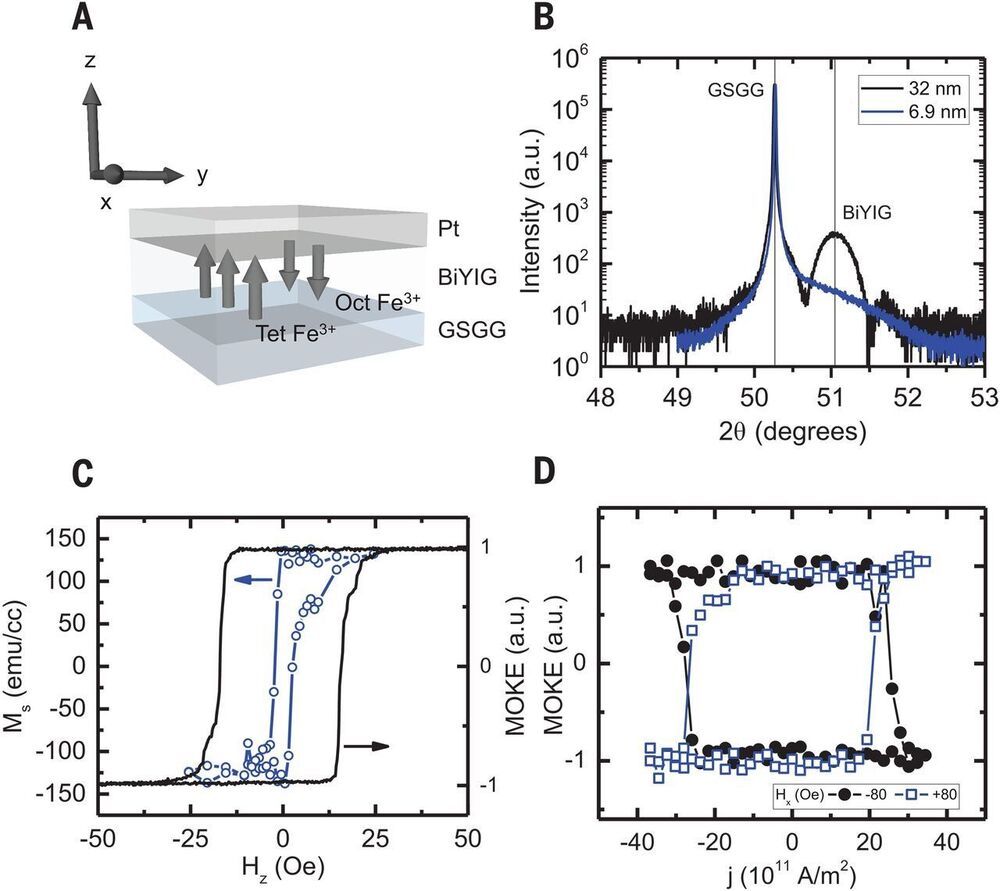A team of researchers from MIT and several institutions in Korea has found that the speed of magnetic domain wall movement is fundamentally limited. In their paper published in the journal Science, the group describes testing a theory regarding the maximum speed of domain walls to prove them correct. Matthew Daniels and Mark Stiles with the National Institute of Standards and Technology in the U.S. have published a Perspective piece outlining the work by the researchers in the same journal issue and sum up the implications of their findings.
One of the basic tenets of Einstein’s theory of special relativity is that there is no particle that can travel faster than the speed of light. In this new effort, the researchers have found a similar boundary for magnetic domain walls.
Materials that are magnetic have domains in which ordered spins are separated from one another by boundaries known as domain walls. Prior research has shown that such walls can be moved by applying an electric current. This particular aspect of magnetic materials has formed the basis of research on racetrack memory. And because the speed of movement of the domain walls determines the speed of the memories created using them, scientists have been pushing them faster and faster. Logic suggests that there must be a limit to how fast the domain walls can be pushed, however, thus establishing a limit to how fast such memories can operate. In this new effort, the researchers have found that fundamental limit.









Comments are closed.